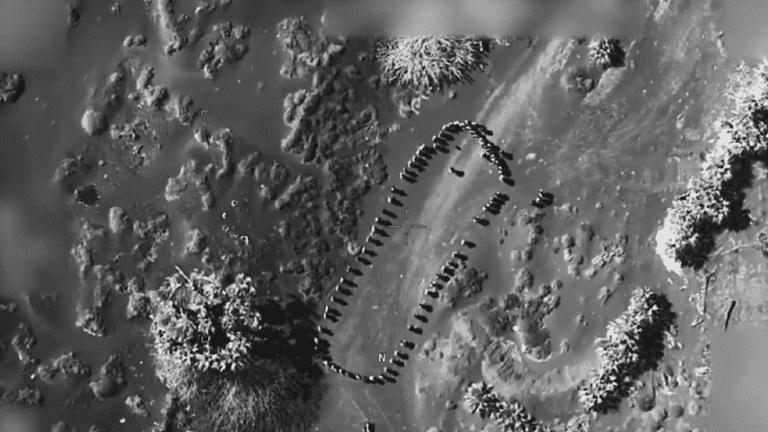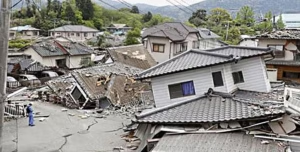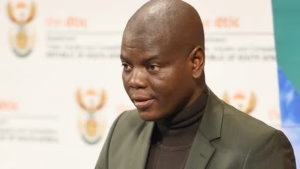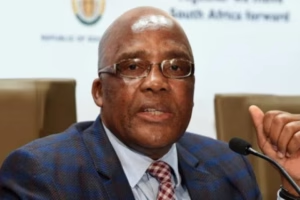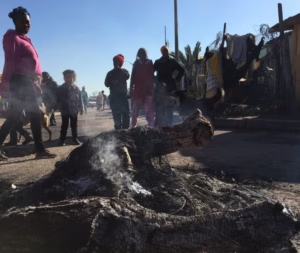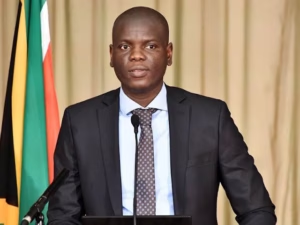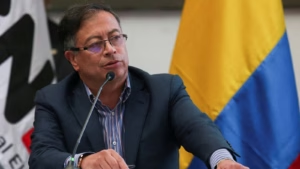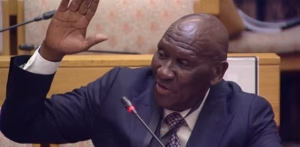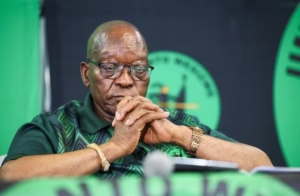A video shared by United States President Donald Trump, purportedly showing a drone strike targeting Houthi forces in Yemen, has ignited a wave of global condemnation, with many questioning the legality of the action and expressing horror over the possible deaths of civilians.
The footage, released via Trump’s personal Truth Social platform, captures a moment in rural Yemen where a munition is seen dropping from above, resulting in a powerful explosion that carves out a large crater in the earth. Prior to the blast, dozens of individuals are seen gathered in an open, oval formation. Once the dust settles, two vehicles remain in the frame, but no visible bodies.
“These Houthis gathered for instructions on an attack. Oops, there will be no attack by these Houthis!”
Trump wrote.
“They will never sink our ships again!”
The footage immediately drew sharp reactions, particularly online, where users pointed out that such gatherings are common for tribal meetings in Yemen. Images of similar assemblies were widely circulated, with many alleging that those killed were not combatants, but civilians engaged in a community event. These claims have not been independently verified, but they have cast a serious shadow over the operation’s legitimacy.
The controversy goes beyond the identification of those present. Critics argue that the strike is emblematic of a broader disregard for international law and the rules of engagement. If civilians were indeed the primary victims, it would represent a grave violation of international humanitarian law, which strictly prohibits targeting non-combatants.
Donald Trump killed the civilians in Yemen and called them “Houthi targets”, during a tribal gathering where villagers were celebrating Eid ul-Fitr.
He is a criminal, a monster, just like Netanyahu. https://t.co/rpS6a9DGi8 pic.twitter.com/JmY7ZhTPx4
— Aysha (@ayshaahmeds) April 5, 2025
Meanwhile, the United States has increased its military operations in Yemen in recent weeks, a move framed by the former president as a direct response to Houthi aggression in the Red Sea. The Bab-el-Mandeb Strait, a strategic maritime corridor, has seen rising tensions, with the Houthis reportedly targeting commercial ships and launching ballistic missiles in solidarity with Palestinians in Gaza.
In March, Trump issued a stark warning to the group via social media:
“Your attacks must stop … If they don’t, hell will rain down upon you.”
The tone of this threat, coupled with the visual display of the strike, has intensified the backlash. Analysts have pointed to the inflammatory language and public celebration of violence as factors that risk escalating regional instability and eroding the norms that govern armed conflict.
Yahya Saree, spokesperson for the Houthi military wing, responded defiantly to the ongoing bombardment.
“[We] will not abandon [our] religious, moral, and humanitarian duties toward the oppressed Palestinian people, regardless of the repercussions,”
he declared on Friday.
The Houthis, who maintain control over large swathes of Yemen including the capital Sanaa, have framed their recent military actions as part of a broader campaign of solidarity with Palestinians. This positioning has complicated international responses, as Western powers attempt to counter the group’s threats to maritime traffic while also navigating the humanitarian crisis in Gaza.
Observers have noted the striking absence of transparency and independent verification surrounding the strike. Without a neutral investigation, questions about who was killed—and whether the action complied with the principles of proportionality and distinction—will remain unanswered.
The lack of accountability, particularly when paired with celebratory rhetoric, fuels concerns among human rights advocates who warn that such actions set a dangerous precedent. The risk is not only the further erosion of civilian protections in conflict zones, but also the normalisation of drone warfare as a tool of political messaging.
The images of the explosion, juxtaposed with the absence of visible human remains, offer no clear answers—only more questions. Were the individuals truly militants preparing for an attack, or villagers caught in a devastating miscalculation? Was the strike a justified act of self-defence, or a show of force indifferent to collateral damage?
Such ambiguity, in the absence of rigorous oversight, underscores a troubling dynamic in modern warfare. Without thorough investigation, the lines between combatants and civilians risk being redrawn in ways that serve power, not justice.
As the dust settles—literally and figuratively—the world watches Yemen once again become the backdrop for geopolitical posturing, with human lives hanging in the balance. For the families who may have lost loved ones in that cratered field, and for observers of international law, the questions now are not just about what happened, but what will be done about it.

